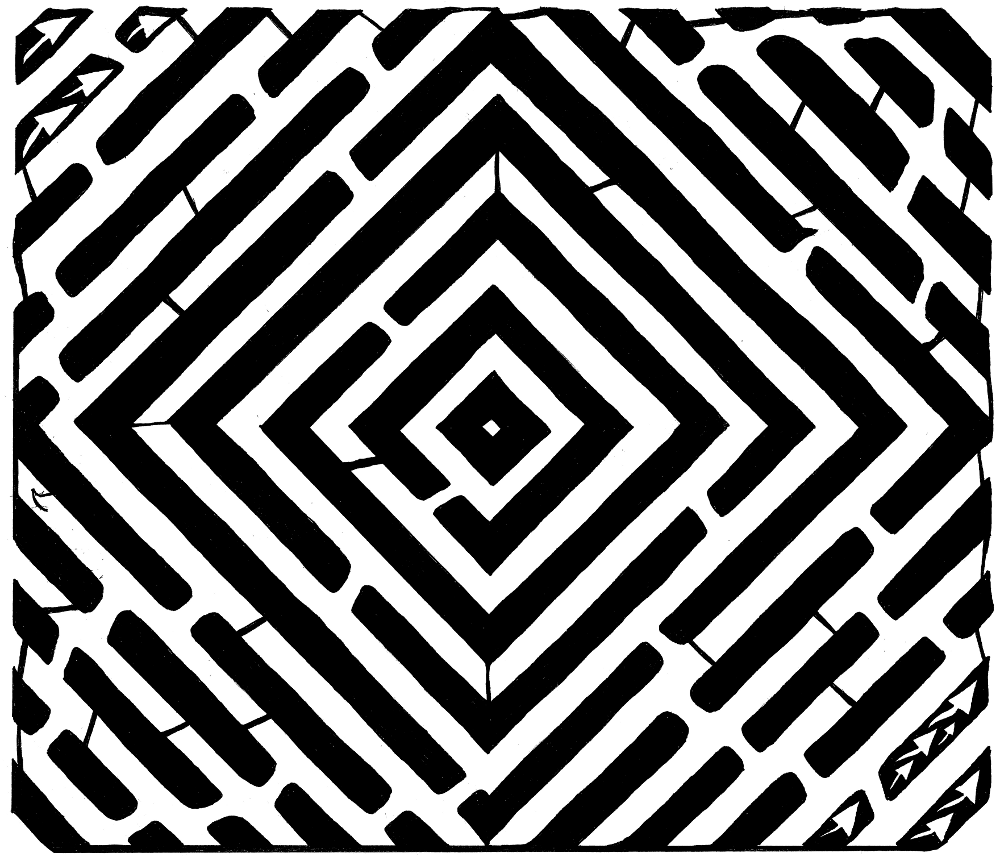
Maze of artists rendition of a pulsating diamond.
A little about diamonds from Wikipedia
In mineralogy, diamond (from the ancient Greek αδάμας – adámas "unbreakable") is an allotrope of carbon, where the carbon atoms are arranged in a variation of the face-centered cubic crystal structure called a diamond lattice. Diamond is less stable than graphite, but the conversion rate from diamond to graphite is negligible at ambient conditions. Diamond is renowned as a material with superlative physical qualities, most of which originate from the strong covalent bonding between its atoms. In particular, diamond has the highest hardness and thermal conductivity of any bulk material. Those properties determine the major industrial application of diamond in cutting and polishing tools.
Diamond has remarkable optical characteristics. Because of its extremely rigid lattice, it can be contaminated by very few types of impurities, such as boron and nitrogen. Combined with wide transparency, this results in the clear, colorless appearance of most natural diamonds. Small amounts of defects or impurities (about one per million of lattice atoms) color diamond blue (boron), yellow (nitrogen), brown (lattice defects), green (radiation exposure), purple, pink, orange or red. Diamond also has relatively high optical dispersion (ability to disperse light of different colors), which results in its characteristic luster. Excellent optical and mechanical properties, combined with efficient marketing, make diamond the most popular gemstone.
Most natural diamonds are formed at high-pressure high-temperature conditions existing at depths of 140 to 190 kilometers (87 to 120 mi) in the Earth mantle. Carbon-containing minerals provide the carbon source, and the growth occurs over periods from 1 billion to 3.3 billion years (25% to 75% of the age of the Earth). Diamonds are brought close to the Earth surface through deep volcanic eruptions by a magma, which cools into igneous rocks known as kimberlites and lamproites. Diamonds can also be produced synthetically in a high-pressure high-temperature process which approximately simulates the conditions in the Earth mantle. An alternative, and completely different growth technique is chemical vapor deposition (CVD). Several non-diamond materials, which include cubic zirconia and silicon carbide and are often called diamond simulants, resemble diamond in appearance and many properties. Special gemological techniques have been specially developed to distinguish natural and synthetic diamonds and diamond simulants.
Top Twelve Places to Download The Diamond Pulse Maze
- Diamond Pulse Maze on Devian Art
- Maze of pulse diamond on Fine Art America
- Diamond Pulse Maze on Flickr
- Optical
Illusion
Mazes
on
Facebook
- Maze of pulsating diamond on TwitPic
- Pulsating Diamond Maze On Rossello Damiano
- Maze of Pulse Diamond on Photobucket
- Diamond Maze on Saatchi Online
- Pulsating Diamond Maze on Live Journal
- Diamond Pulse Maze on Picassa
- Diamond
Pulse
Maze
on Red Bubble
- Diamond
Pulse
Maze
on
Team Of Monkeys . com
Some other popular mazes:
Click here to google image search the word "maze" - We come up a few times!